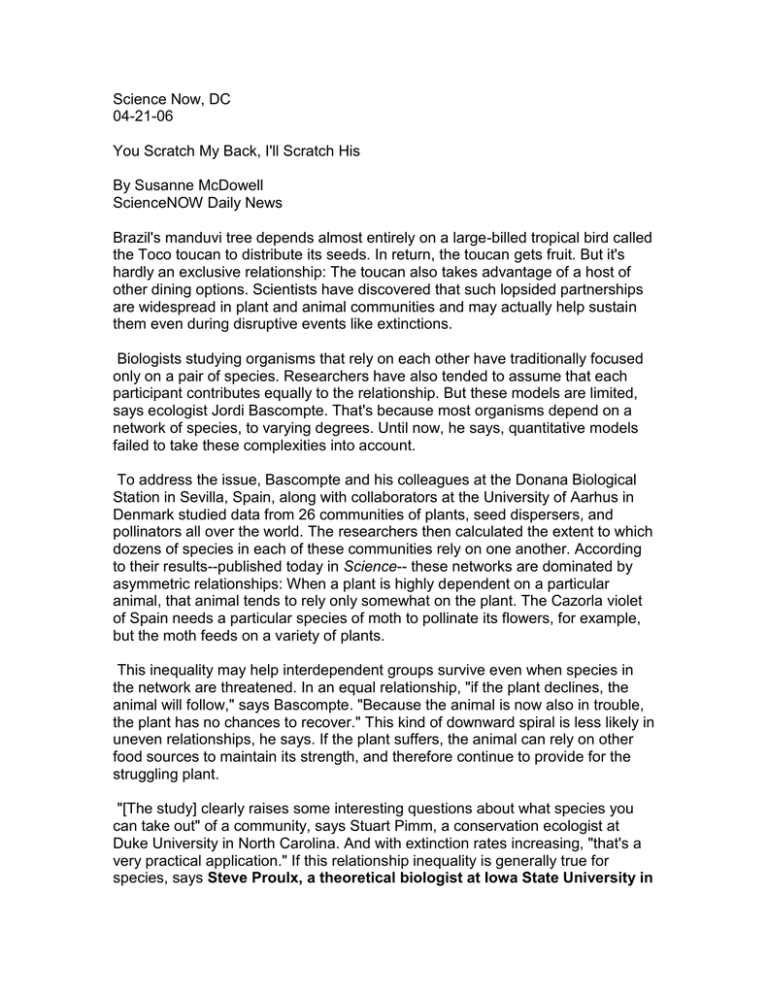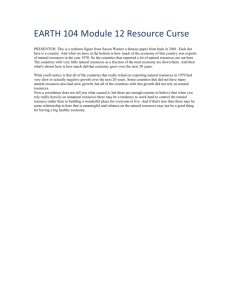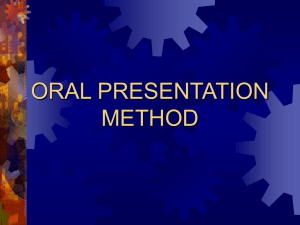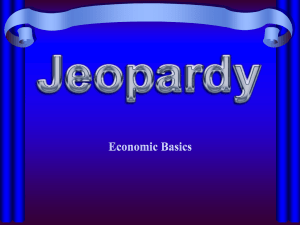Science Now, DC 04-21-06 You Scratch My Back, I'll Scratch His
advertisement

Science Now, DC 04-21-06 You Scratch My Back, I'll Scratch His By Susanne McDowell ScienceNOW Daily News Brazil's manduvi tree depends almost entirely on a large-billed tropical bird called the Toco toucan to distribute its seeds. In return, the toucan gets fruit. But it's hardly an exclusive relationship: The toucan also takes advantage of a host of other dining options. Scientists have discovered that such lopsided partnerships are widespread in plant and animal communities and may actually help sustain them even during disruptive events like extinctions. Biologists studying organisms that rely on each other have traditionally focused only on a pair of species. Researchers have also tended to assume that each participant contributes equally to the relationship. But these models are limited, says ecologist Jordi Bascompte. That's because most organisms depend on a network of species, to varying degrees. Until now, he says, quantitative models failed to take these complexities into account. To address the issue, Bascompte and his colleagues at the Donana Biological Station in Sevilla, Spain, along with collaborators at the University of Aarhus in Denmark studied data from 26 communities of plants, seed dispersers, and pollinators all over the world. The researchers then calculated the extent to which dozens of species in each of these communities rely on one another. According to their results--published today in Science-- these networks are dominated by asymmetric relationships: When a plant is highly dependent on a particular animal, that animal tends to rely only somewhat on the plant. The Cazorla violet of Spain needs a particular species of moth to pollinate its flowers, for example, but the moth feeds on a variety of plants. This inequality may help interdependent groups survive even when species in the network are threatened. In an equal relationship, "if the plant declines, the animal will follow," says Bascompte. "Because the animal is now also in trouble, the plant has no chances to recover." This kind of downward spiral is less likely in uneven relationships, he says. If the plant suffers, the animal can rely on other food sources to maintain its strength, and therefore continue to provide for the struggling plant. "[The study] clearly raises some interesting questions about what species you can take out" of a community, says Stuart Pimm, a conservation ecologist at Duke University in North Carolina. And with extinction rates increasing, "that's a very practical application." If this relationship inequality is generally true for species, says Steve Proulx, a theoretical biologist at Iowa State University in Ames, "it's going to be very important" in predicting how networks react to the addition or disappearance of species.


